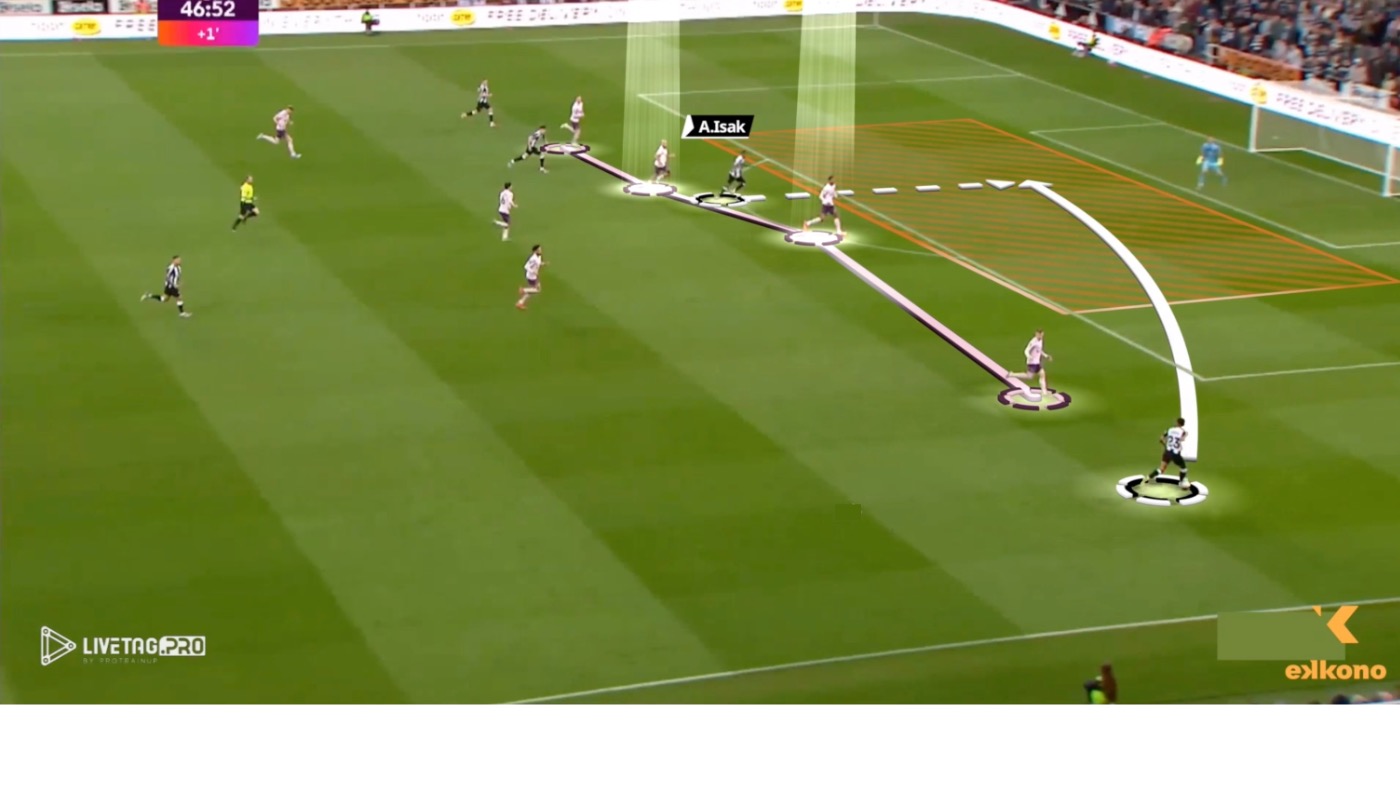
Isak: The Most Expensive Striker in Premier League History
Alexander Isak has become the most expensive striker in Premier League history, a figure that alone reflects the magnitude of his transfer and the expectations surrounding him. His move to Liverpool is not solely based on his ability to score goals, but rather on the profile of a modern forward who perfectly embodies the demands of today’s game: mobility, tactical intelligence, combination play, and versatility in the final third.
In this article, we will analyze his profile as a player, reviewing how he consolidated himself as Newcastle’s attacking reference under Eddie Howe, and exploring how he could fit into a giant such as Arne Slot’s Liverpool.
A Mobile False 9 Profile
Isak is not the classic striker who remains fixed in the 18-yard box waiting for crosses. Instead, he constantly moves to unbalance the defensive line, alternating between dropping deep to receive and making diagonal runs into space.
A key element in his game is leaving the finishing zone only to re-enter it at the right moment, ensuring continuity in attacking actions. This mobility allows him to link play between the lines and create dynamics that unsettle opponents.
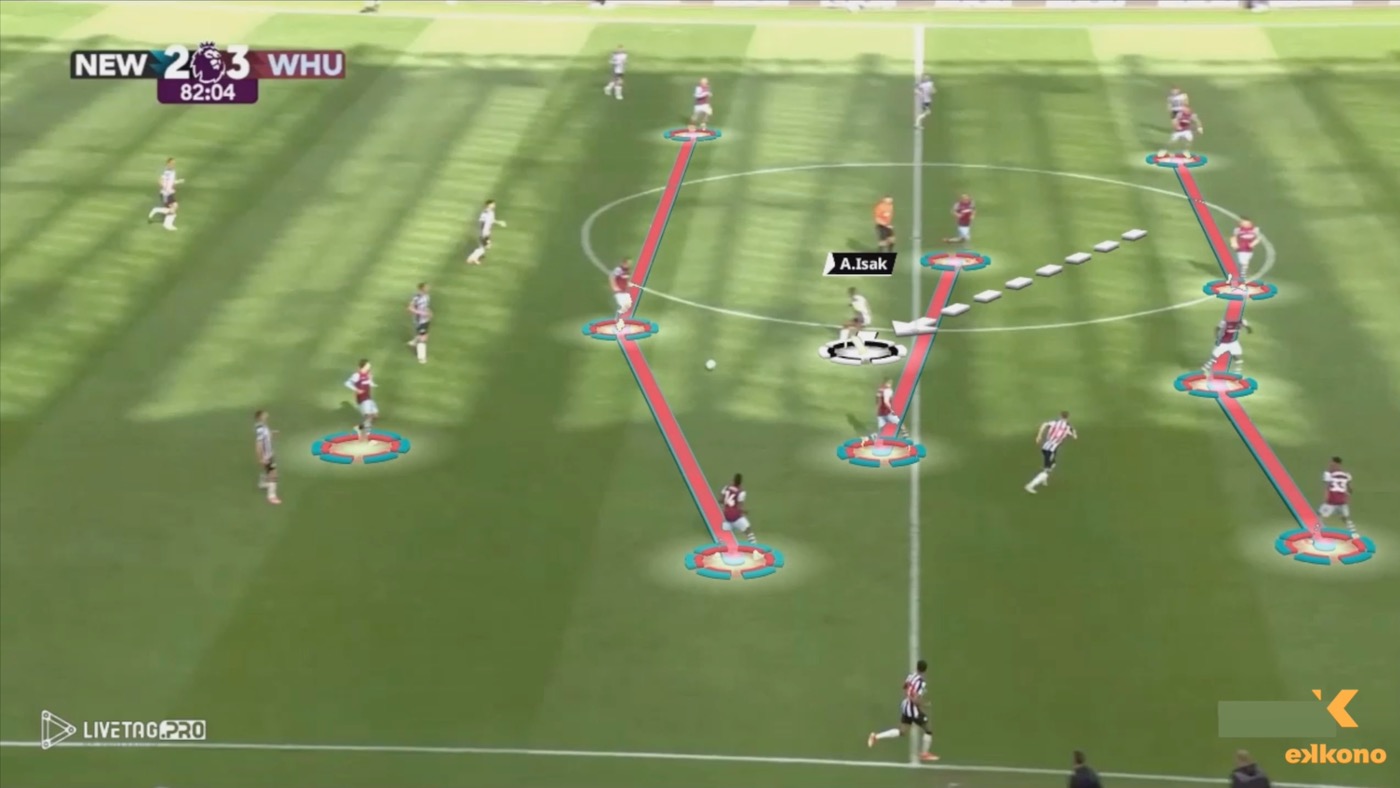
Alexander Isak. A Mobile False 9 II
Alexander Isak drops back, acting as a false 9, to receive the ball between the defensive lines.
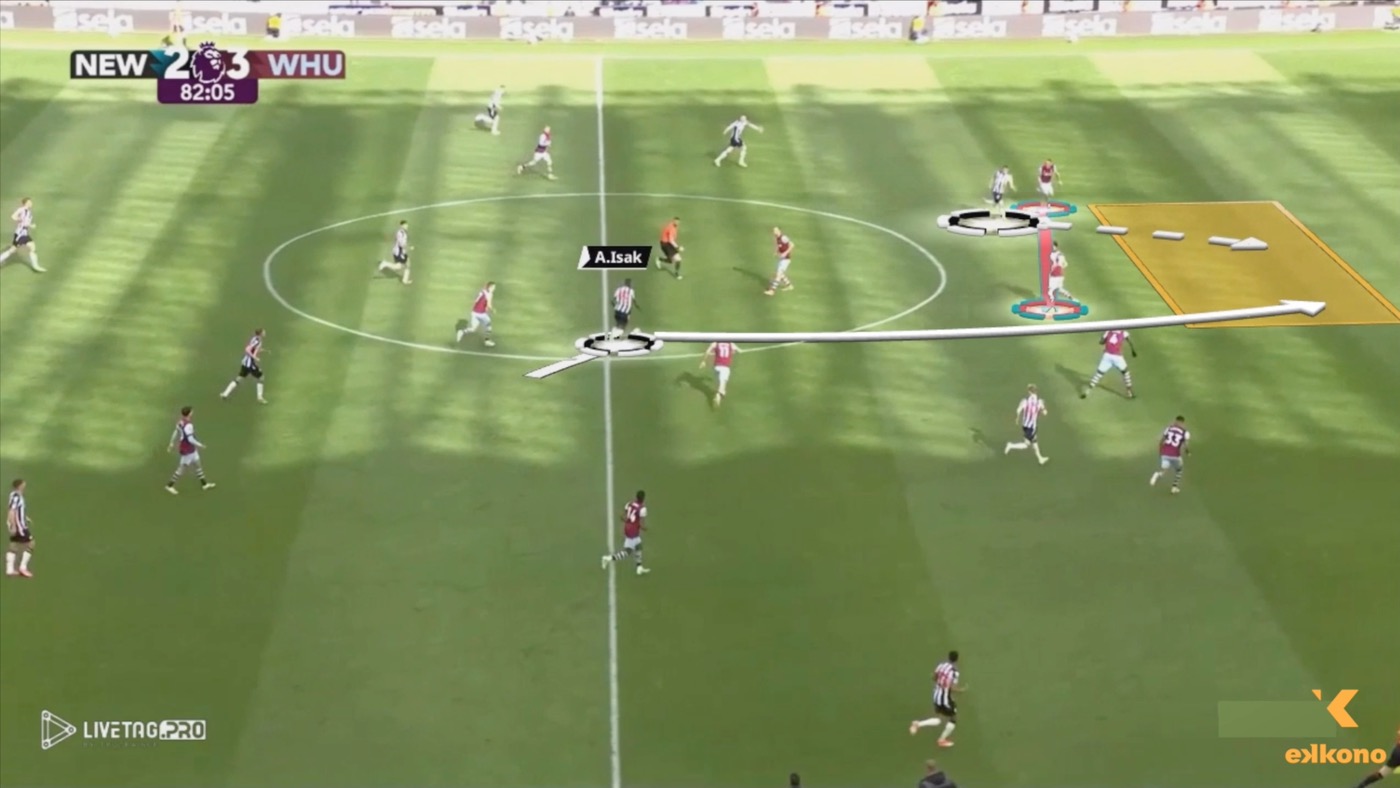
Alexander Isak. A Mobile False 9
He then spots an unmarking movement behind the imbalanced defensive line and delivers an accurate pass to his teammate.
Being the Link or Attacking the Space in Offensive Transitions
Isak is fundamental in transition moments, especially in the first action after regaining possession. He is capable of controlling, protecting, and carrying the ball forward.
His long stride allows him to cover ground with very few touches, breaking lines and driving the team forward. Depending on his positioning — whether receiving diagonally or vertically — he can either act as a link player to activate other teammates or attack the space directly. These movements are key to ensure successful offensive transitions.
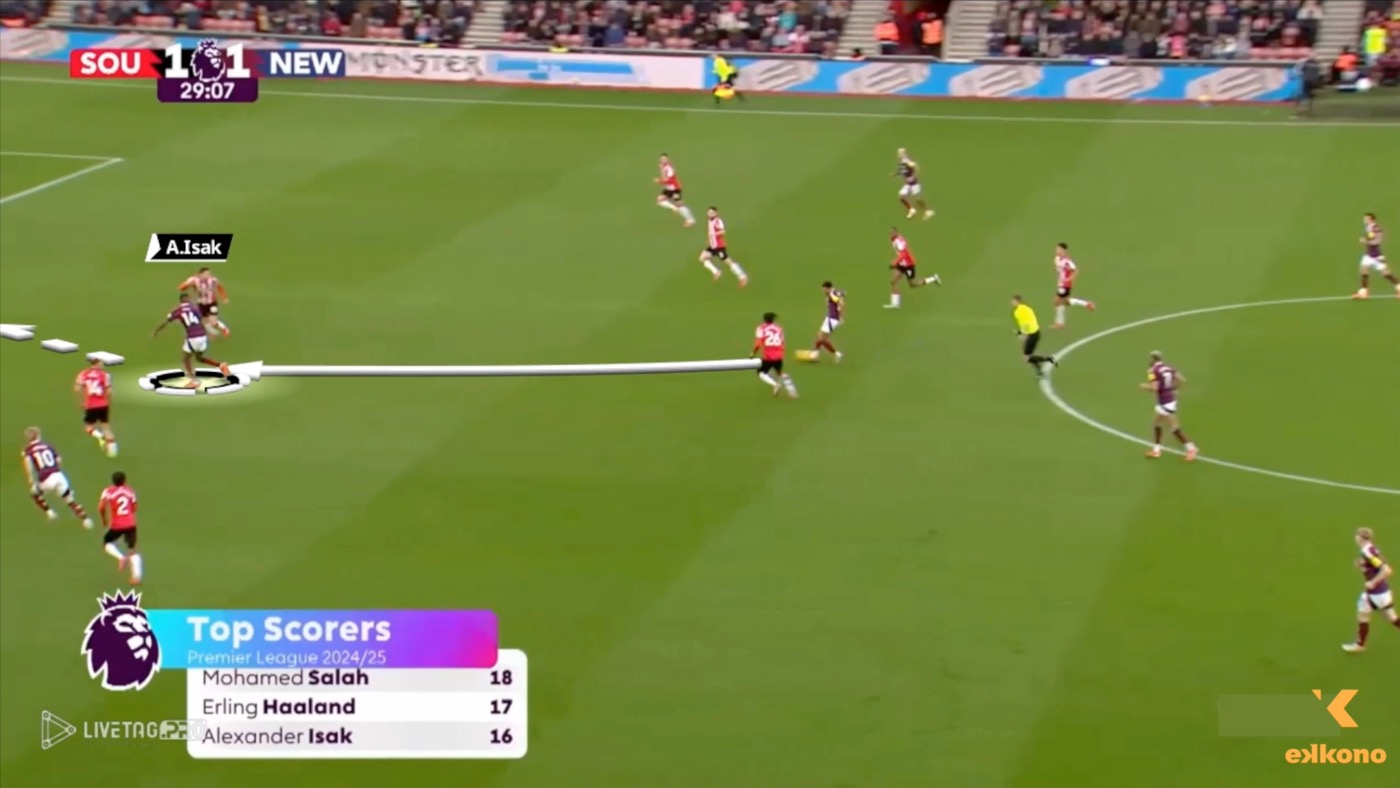
Alexander Isak. Offensive Transitions
In this example, we see how during the offensive transition, Isak is ensuring to attack the space and creates a clear passing option.
Occupying Useful Finishing Spots inside the Box
Rather than waiting for aerial deliveries, Isak prefers to arrive into shooting zones after a run or a carry. He is precise with low, diagonal shots and clinical when attacking spaces where he can finish with one touch.
Despite his 1.92m (6’4″) frame, aerial play is not his greatest strength. However, he compensates by being able to finish effectively with both feet, often striking first time inside the box thanks to his timing to reach “useful finishing zones” consistently. This explains his high volume of goals, even without dominating in the air.
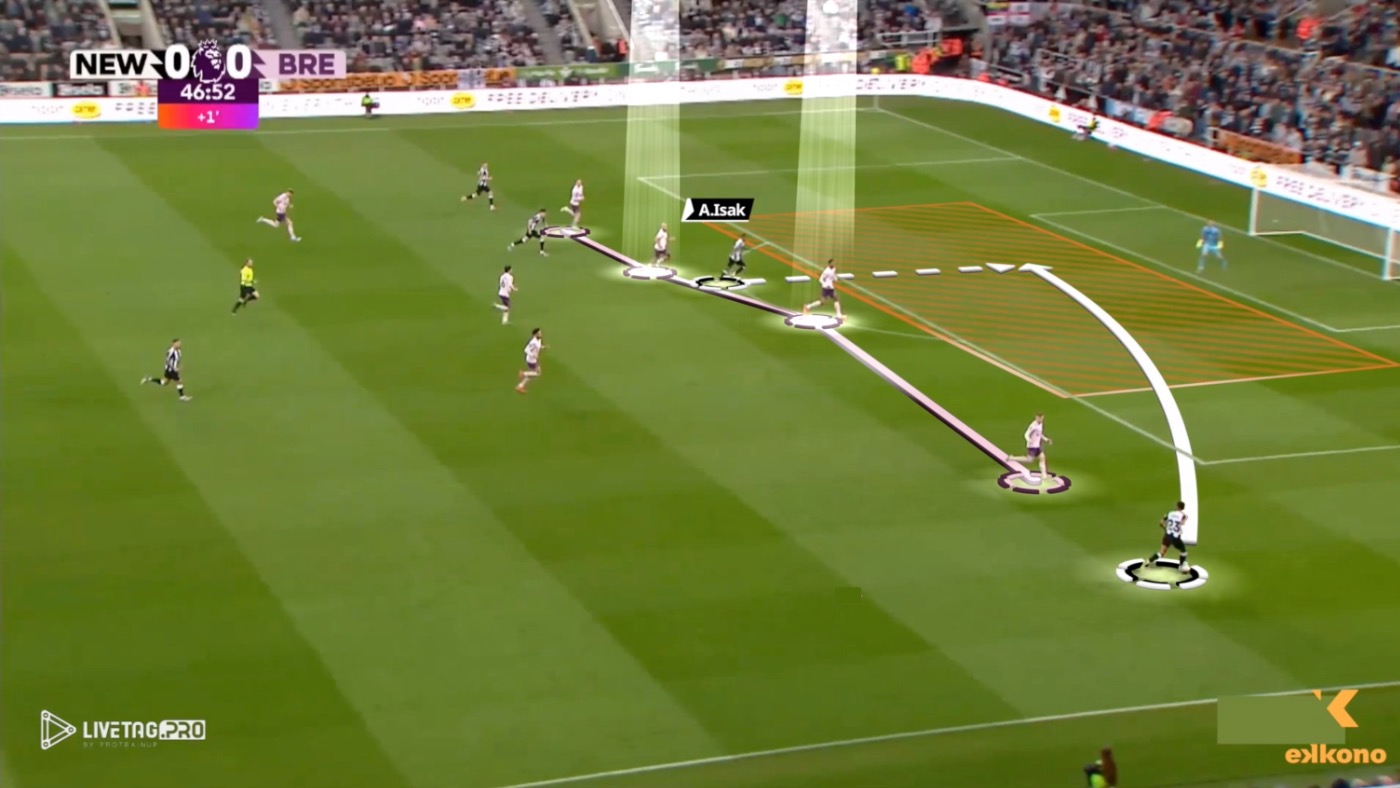
Alexander Isak. Occupying Useful Finishing Spots inside the Box
Alexander Isak starts his run from a gap between center backs, to be in a useful space to attack the cross and score.
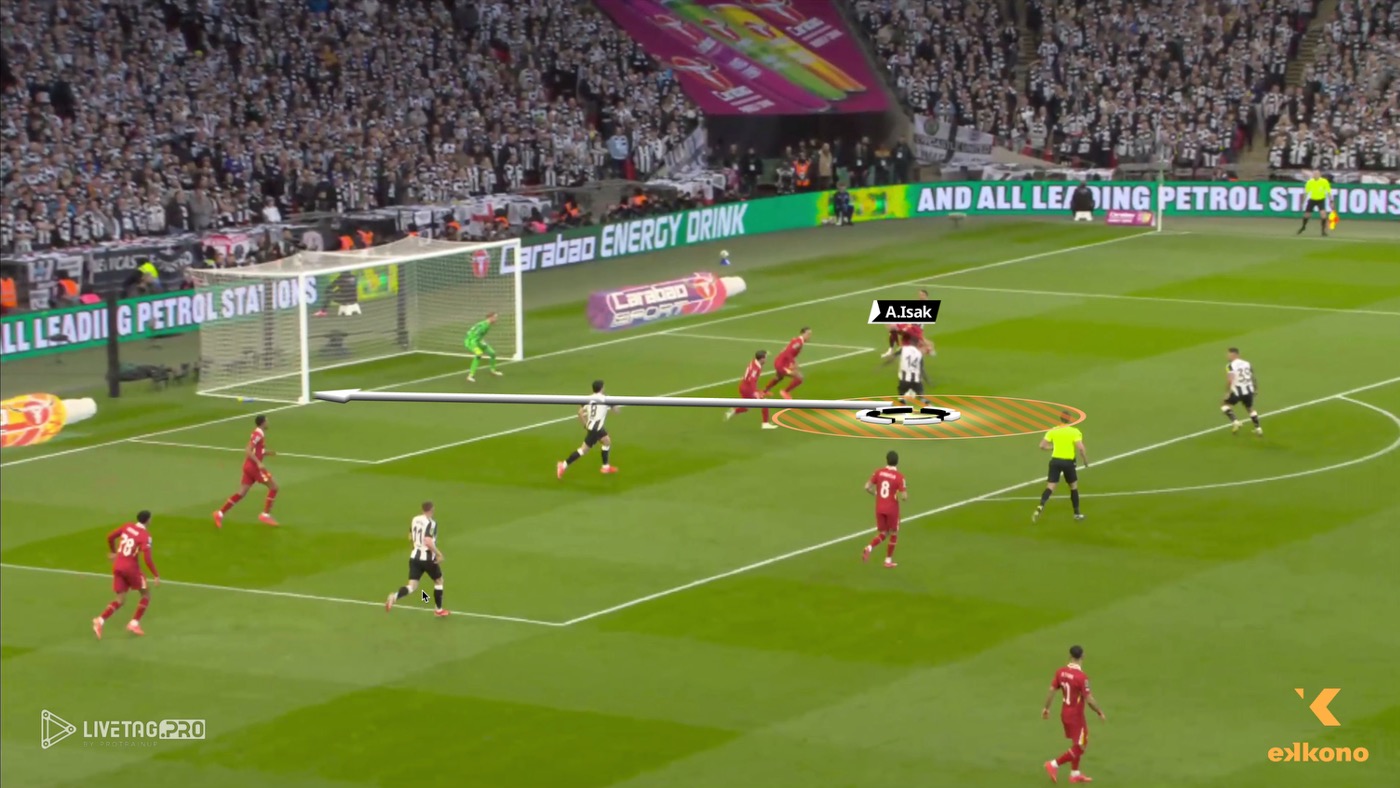
Alexander Isak. Occupying Useful Finishing Spots inside the Box II
Isak separates from the two center-backs in the box and finishes the action with precision in one touch to score.
Striker Role in High Pressing
Under Eddie Howe, Newcastle often defended in an aggressive mid-to-high block. Isak contributed by closing passing lanes into the opposition’s holding midfielder and steering play wide.
At Liverpool, this role can be reframed: looking back to check for the holding midfielder, cutting off central progression, and intelligently pressing to guide opponents’ build-up toward the flanks. The focus is less on raw intensity and more on his capacity to guide pressing actions while reading and closing lines of play. These Individual Fundamentals by Position (IFP) concepts are key for in high pressing, and we must demand our strikers to apply them successfully to improve our defensive performance.
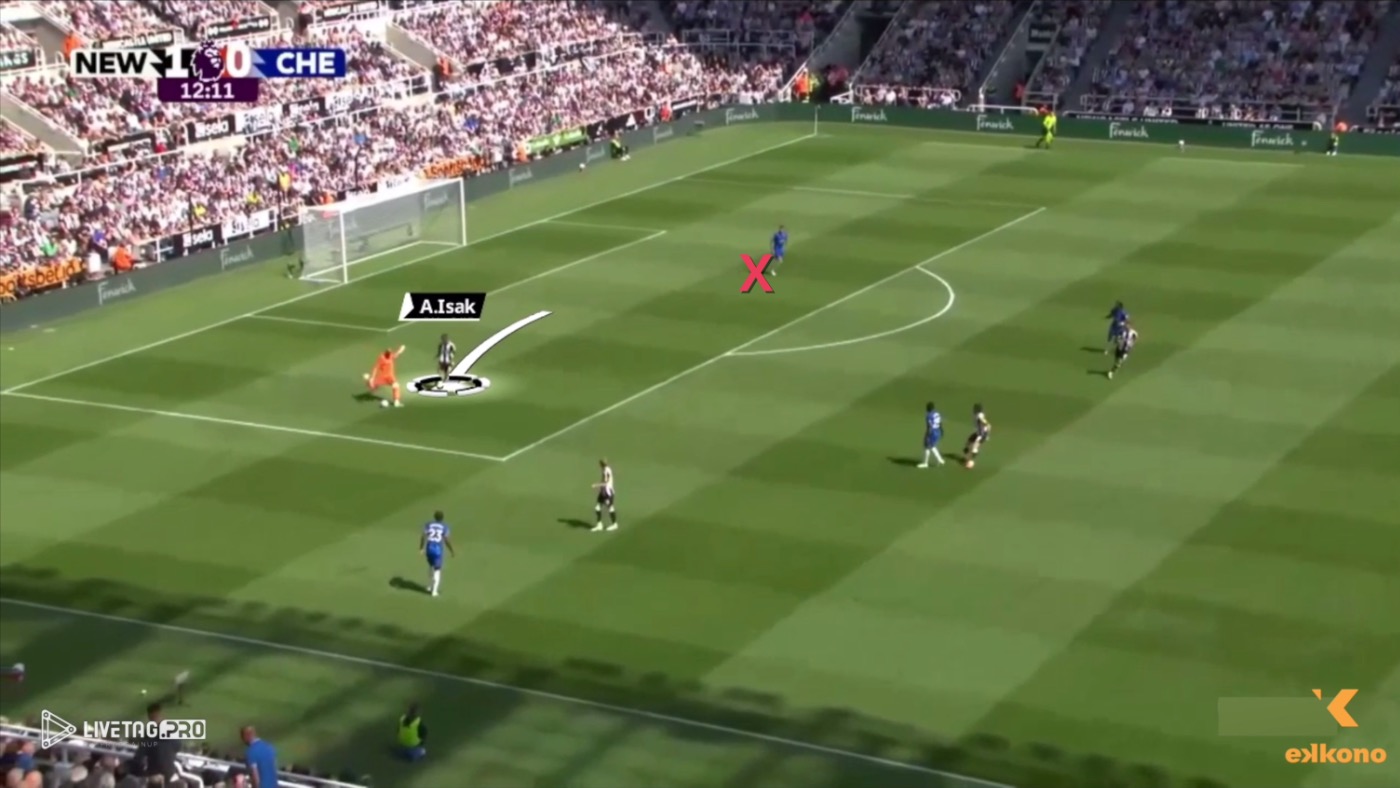
Alexander Isak’s Role in High Pressing
Alexander Isak pressing the goalkeeper while closing the passing lane to the center back, forcing to play long ball.
What to Expect from Isak at Liverpool?
At Liverpool, Isak could offer a different attacking reference: more control and link-up play to feet, while still maintaining depth with his off-ball runs. This profile may suit the demands of a false 9, where he can associate with midfielders and wide players before looking to attack space himself.
His movements into the left half-space might free the right interior channel for Mohamed Salah, creating conditions for the Egyptian to exploit central and diagonal runs. Defensively, his intelligence in closing passing lanes suggests he could adapt well to Slot’s pressing model, where orientation and blocking central access are as important as intensity.
Ultimately, while his qualities make him appear an excellent fit on paper, his true impact at Liverpool will depend on how quickly he adjusts to Slot’s system, his chemistry with Salah and the midfield, and his ability to translate his Newcastle performances to a bigger stage. If the adaptation works, he has the tools to elevate Liverpool’s performance at the highest level.

